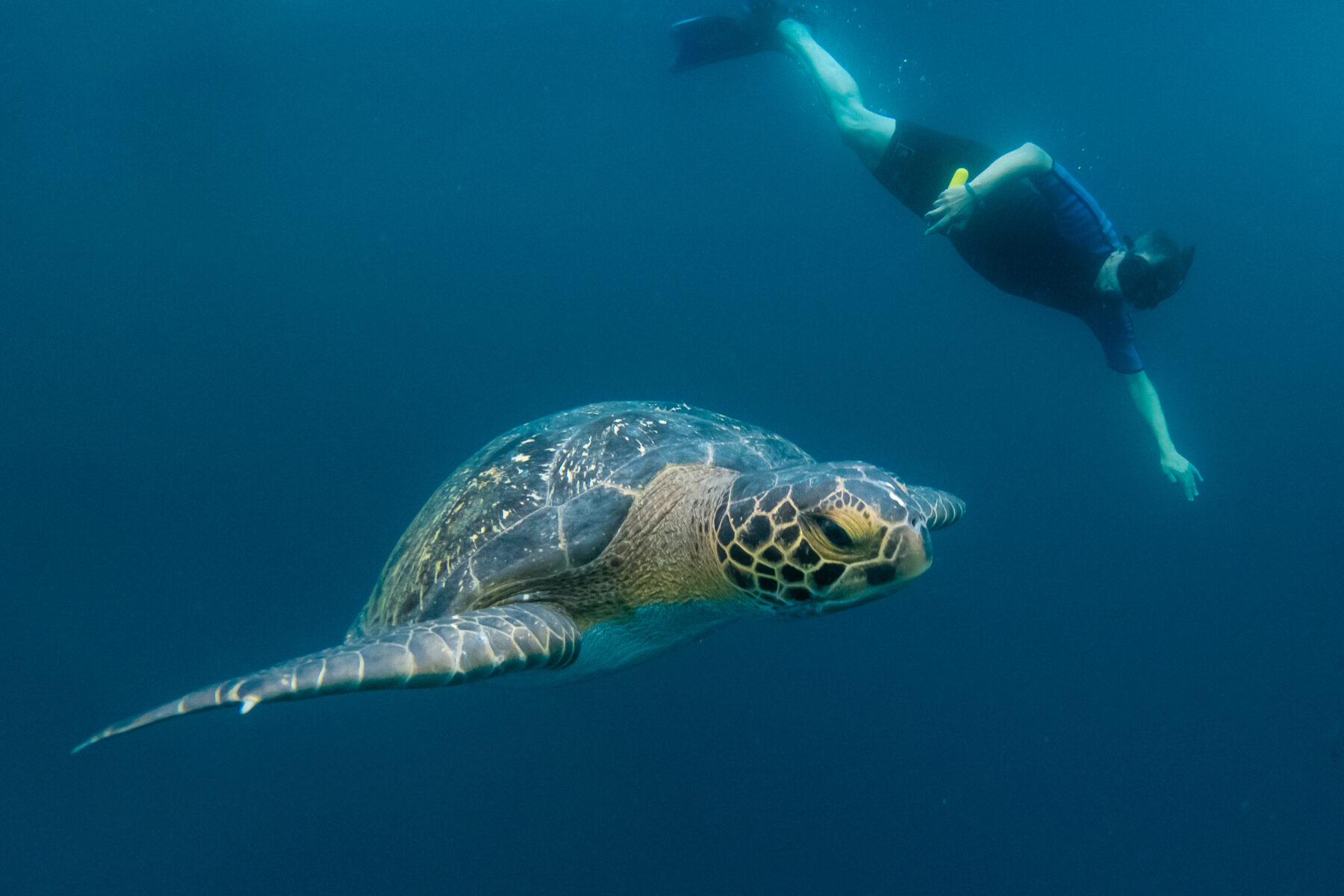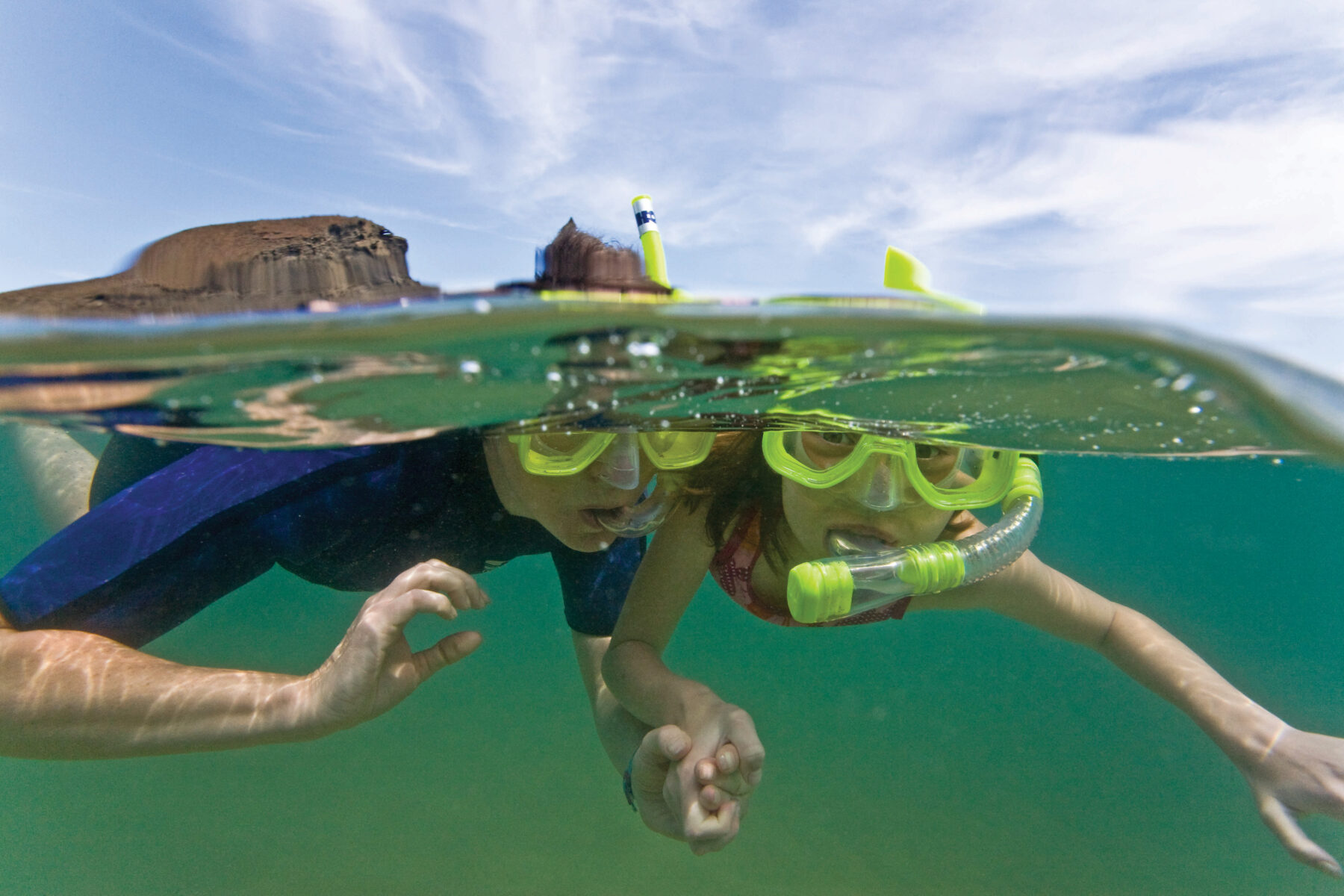Where nature thrives: Lindblad’s Galápagos

This article is brought to you by Lindblad Expeditions.
Charles Darwin could hardly believe his eyes when he visited the Galápagos Islands on HMS Beagle in 1835. Over the five weeks he explored the islands, the variety of wildlife he witnessed, lazing on land, frolicking in the sea and flitting overhead, inspired him to write the landmark book On the Origin of Species, which stunned the world in 1859.
The plant life on the island also had him completely captivated, with around 500 species of flora on the islands, approximately one third of them endemic to this precious part of the world. Every island is uniquely fascinating, each with a different ecosystem displaying its own vegetation.
Darwin’s name is not the only one that comes to mind when you think of these islands. So too does the name Lindblad Expeditions, a pioneering company that brought the first group of citizen explorers to these islands over 50 years ago. That same passion is just as evident today as it was back then, with Lindblad Expeditions-National Geographic still focused on showcasing these quirky and enigmatic islands, as well as honouring Charles Darwin through their support of the Charles Darwin Foundation (CDF).


Guests explore the unique archipelago; Spotting a giant tortoise in the Galápagos highlands. Image credit: Lindblad Expeditions
Conservation and Exploration
From the very beginning, strict measures have been in place to preserve the Galápagos Islands, by reducing the impact of visitors and placing a heavy emphasis on conservation. As these islands are so remote – around 965km from the Ecuadorian coastline – they hold an air of mystery, of intrigue, and stories of pirates between the 1500s to 1700s, raiding ships along the trade routes the using the islands to store their plunder make it even more alluring. Little did they know then that the islands themselves are the true treasure.
Conservation has been part of Lindblad Expeditions’ DNA since that first visit, with guests contributing $10 million to the conservation of Galápagos habitats and communities. Established in 1959, the same year that Ecuador declared this idyllic archipelago a national park, the CDF built a research station five years later, which is its main base for the important scientific research carries out. Most often associated with breeding and rearing giant tortoises, the Charles Darwin Research Station has a broad scope, from restoring degraded ecosystems to promoting sustainable agricultural practices and investigating several species of shark.
Snorkelling alongside a giant tortoise. Image credits: Lindblad Expeditions
A Family Affair
With children the eco- and conservation warriors of the future, first-hand experiences shared with parents, siblings and even grandparents are pivotal to educating them about the environment, planting the seed that will see them care about the Galápagos for many years into the future. Lindblad Expeditions-National Geographic welcomes families on board, and rather than just seeing the wildlife and the ecosystems, there are many scientific activities in the National Geographic Global Explorers Program for teens and children. These programs engage young adults through hands-on activities and educate them about wildlife and the local ecosystem. This exclusive family program teaches kids about this fascinating part of the world, from “sneezing” iguanas to the incredible giant tortoises.


Young adventurers jumping from a Zodiac in the Galápagos, Ecuador; Captain and young guest on the bridge of the ship National Geographic Endeavour II examining a map. Image credit: Lindblad Expeditions
Kids’ imaginations will run wild in these magical islands, as they see blue-footed boobies, penguins, sea lions and marine iguanas, just to name a few charismatic creatures. And the experiences won’t just be watching and seeing, but experiential, with hikes, kayaking, paddle boarding, and snorkelling to see what lies beneath the water’s surface – all in the capable hands of the expert expedition staff. And they are local, with the Galápagueños offering an extensive knowledge of island species and habitats. Nothing beats learning from someone with a strong connection to the region’s culture and history. There’s an element of fun, with the guides teaching kids to learn about the islands with an explorer’s mindset. Every child in the National Geographic Global Explorers program is presented with a specially designed Galápagos field notebook filled with species checklists, photos, maps and more, with kids able to record their own observations and sketches of some of the landscapes and wildlife they will come upon.
All Aboard
Exploration of the Galápagos Islands is aboard the well-equipped National Geographic Endeavour II or National Geographic Islander II, the perfect ships from which to sail around these gems – and there’s a lot to see. There is a striking array of activities for multigenerational families, couples or solo travellers who are seeking adventure in this relatively unknown destination where 97 per cent of the land is preserved as a UNESCO World Heritage Site.
Young guests snorkelling in the Galápagos Islands, Ecuador. Image credit: Lindblad Expeditions
The animal sightings will be a highlight, and you will need to be on your guard to try to see as many as possible. As you sail throughout the islands, be on the lookout for Blue or red footed boobies, lizards, iguanas, mockingbirds and sea lions. Kayaks and stand-up paddleboards can bring you within feet of surfacing sea turtles or shark nurseries, and glass-bottom Zodiacs offer a window onto the colourful fish that swim just beneath gentle waves.


Image credits: Lindblad Expeditions.
Lindblad Expeditions-National Geographic has numerous itineraries in The Galápagos, on board the National Geographic Islander II – catering for 48 guests in 26 cabins – and the newer National Geographic Endeavour II which can cater for 96 guests in 52 cabins.
With these nimble, intimately scaled expedition ships, Lindblad Expeditions-National Geographic can help you and your family delve into this wild wonderland, ensuring each and every one of you takes home a sense of responsibility for this special place. After all, loving a place is the best way to ensure you will care for it.
This article is brought to you by Lindblad Expeditions. For more information call 1300 362 012 or email [email protected]






